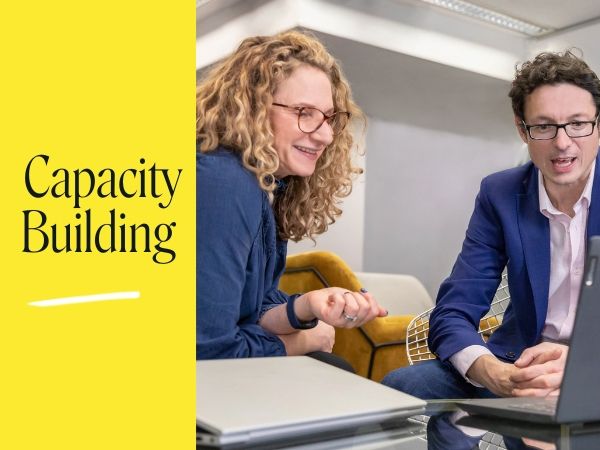Written by Eastside People non executive director and consultant Rosie Chadwick.
There are already several helpful guides to developing theories of change, including those produced by New Philanthropy Capital and Nesta.
The international development arena also has a wealth of experience of using theories of change, rich learning from which is captured in Isabel Vogel’s 2012 ‘Review of the use of ‘Theory of Change’ in international development.‘
The further practice pointers below draw on my personal experiences when I supported a variety of organisations – from early years providers to housing associations to infrastructure bodies – on their Theory of Change journeys.
1. Mapping a Theory of Change as a Collective Exercise
Theories of change are best developed through dialogue. Indeed, the dialogue itself is invaluable in building a strong shared understanding of goals and underlying assumptions and embedding a culture of thinking critically about what you are doing and why. A half day workshop for a dozen or so staff, trustees and volunteers is a useful way to start. After that the conversation can usefully be expanded for example with a follow up session to refine the first ‘cut’ – and/or by opening up the conversation to a wider group of stakeholders (including commissioners) who will bring their own distinctive insights.
2. Preparing Participants for What’s Coming
A short briefing note circulated ahead of time can help to demystify theories of change, whilst also encouraging participants to reflect on key questions in advance.
3. Reflecting the Experience of Service Users
It seems self-evident that service user input is key to developing a Theory of Change that is credible and authentic. Generally speaking, I’ve found that service user voices come across most clearly not when they are part of a wider Theory of Change workshop, but rather by creating opportunities for service users to describe the changes they experience in whatever ways work best for them, encouraging creative self-expression.
4. The Narrative is Key
I’ve seen some theories of change that consist of beautiful schematics but lack a detailed (or even cursory) explanation of the evidence or assumptions on which the theory is based: what it is that gives the organisation confidence that their approach helps bring about the changes sought. The narrative is the toughest bit and often requires a bit of digging to unearth the evidence and expose the key assumptions. But it’s this theoretical underpinning that gives a Theory of Change ‘bite’, not least by highlighting links with relevant academic research on which your approach is built, or that you need to take on board. The narrative is also key in pointing up new avenues for development.
5. Capturing the Essence of How You do Things
How an organisation does things can often be just as important as what they do. Being explicit about this in a Theory of Change can put a spotlight on important aspects of culture and behaviour that need to be nurtured and celebrated.
6. Enablers
Enablers – or the critical success factors on which success depends warrant close attention. A Theory of Change may well surface enablers that receive relatively little attention, but have potential to be show-stoppers (and not in a good way).
7. Mapping a Theory of Change for a New Project, or Linking it with Strategy Development
Sometimes a Theory of Change for a whole organisation can be too much to take on or a view may be taken that the time isn’t right. Introducing a discipline of mapping a Theory of Change when designing a new project can be a helpful place to start. It’s a basic building block of project design and colleagues will recognise its benefit. There’s also a strong case for looking at Theories of Change as part of strategic planning exercises, since the analysis involved often points up future development priorities.
8. Perfection is a Thing Not to be Achieved
The search for perfection can be paralysing and deter people from starting on the journey. It also implies a degree of certainty that doesn’t exist and risks seeing the Theory of Change as something set in stone when it can and should change in the light of experience and evidence. My top tip is – just get started! The main message from international development colleagues is that ‘if handled lightly as a flexible way to think through fundamental questions about programmes’ Theories of Change can ‘create better informed hypotheses of change, inspire innovations and improvements in programme strategies, and strengthen the potential of programmes to support the development outcomes they seek.’ My own experience bears this out.
Read the Right There Case Study that covers how they started with Theory of Change to help them focus on what and who they are here for, how they make a difference, and what success depends on.
Find out more about our Theory of Change.

Find out more about our Strategy Consultancy Services for Not-for-profits.








